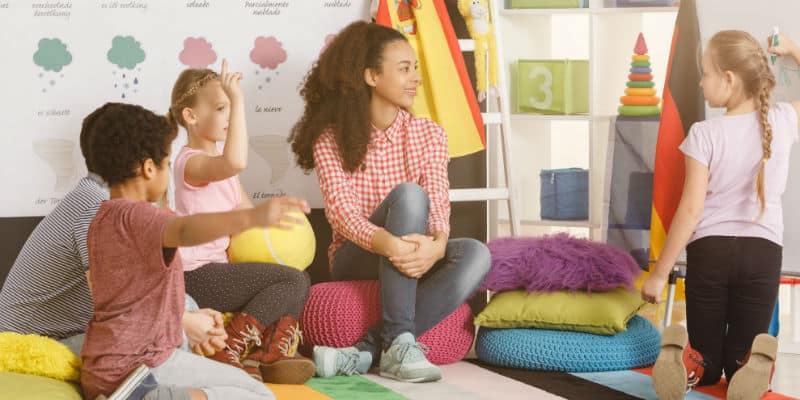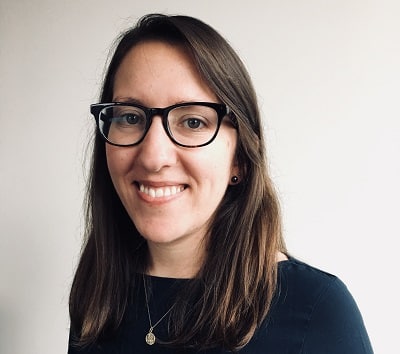Preschool is getting some time in the sun these days. Many of the Democratic presidential candidates have made statements about expanded or even universal pre-kindergarten. And the New York Times recently highlighted a program called Waterford Upstart that is working to close the early learning gap through an online program that children use for 15 minutes per day. (Full disclosure: the Christensen Institute’s President Ann Christensen is on the Waterford board.)
Only about two-thirds of four-year-olds are enrolled in some form of pre-K, indicating that many families are either shut out of the market or choose not to take part. At the Institute, when groups of people can’t (or don’t) access a product or service, we define that as an area of nonconsumption. Areas of nonconsumption present ripe opportunities for Disruptive Innovation—a process by which technologically-enabled new products and services, such as a computer-based kindergarten preparation program, compete on affordability and accessibility rather than traditional metrics of performance in brick-and-mortar preschools, and then relentlessly move upmarket to eventually displace established competitors. Since the Upstart program is designed to be technologically-enabled, affordable, and accessible to nonconsumers of early learning options, in the long run, the program could be potentially disruptive relative to conventional preschools.
“Online preschool,” as the Times article dubs Upstart, is a phrase bound to make anyone shudder. Pitting screen-based learning against the tactile and social learning that happens in conventional preschool raises real concerns about whether online early learning sacrifices critical developmental aspects of early childhood education. Furthermore, concerns about quality become ethical questions when considering the vulnerability of young children, and the reality that children from low-income and marginalized families are least likely to have access to preschool options. Some might argue an online preschool option might be better than no preschool at all, but families shut out of the market deserve more than a “better than nothing” option.
However, dismissing online early learning entirely risks throwing the baby out with the bathwater. In fact, we stand to learn a lesson about how disruption can play out ethically in the social sector.
Here are three principles that the public and policymakers should keep in mind when considering how online early learning programs might play a role without cutting families short on quality pre-K:
1. Don’t overstate what online early learning programs are trying to accomplish.
Upstart’s strategy of introducing a scalable and affordable (read: free) program in an area of nonconsumption means that it could be potentially disruptive relative to traditional preschool in the long-term. That’s different from seeking to replace full-service preschools right out of the gate. Upstart’s website is intentional about describing the program as academic preparation for kindergarten, not an “online preschool” experience complete with social development and singing and Legos. Upstart emphasizes the important role of adults (such as family members) in a child’s learning experience, but it isn’t seeking to replicate or digitize all the important and formative experiences that children should have as they develop—it focuses on key academic preparation for kindergarten.
2. Wrap additional support services around online early learning programs.
The Times article compares Upstart with telemedicine—and in drawing that analogy, we should remember that hospitals are using telemedicine as one strategy among many to enable high-quality, affordable healthcare. We might view online early learning programs the same way, as one component of many for early childhood development. Human relationships and tactile playtime should not be on the table as optional when considering what kids need, especially if unequal access plays out along socioeconomic lines. But rather than dismissing an affordable kindergarten preparedness program as inferior to preschool, communities and policymakers should consider what additional experiences should complement an online academic component.
Blended learning in K-12 schools is a useful example of how online learning, which is growing on a disruptive trajectory, can be integrated into schools to offer students a full school experience while also unlocking flexibilities to better meet students’ individual needs and demands (often on a leaner budget). For example, the Enriched Virtual blended-learning model moves students’ academic core online, while offering additional experiences like small-group collaboration, academic coaching, and extracurriculars in a brick-and-mortar learning space. Likewise, online early learning programs could be situated within childcare centers, parent co-ops, and individual households, offering children a whole suite of experiences necessary for development without requiring every child to be enrolled in a fully licensed preschool.
3. Design programs taking advantage of online early learning with the families they serve, not for them.
By definition, disruptive innovations dramatically expand access to products and services, but access is only one part of equity. Growing access to a solution doesn’t mean that the solution is actually meeting the particular needs and demands of users on their terms. When introducing potentially disruptive solutions to meet critical needs like early learning, using a top-down design approach risks missing the mark on what experiences are most important to families without access to preschool. However, pairing the principles of disruptive innovation with inclusive design and co-creation (described here by 228 Accelerator’s Caroline Hill) could result in greater access and affordability that doesn’t undermine the basic right all families have to quality pre-K options.
Working with intended beneficiaries to design pre-K options that take advantage of an online learning component could accomplish both greater affordability and better fit with what families value and demand. For example, families that want pre-K and childcare options responsive to the cultural or religious identity of their community might value a neighborhood childcare center staffed by community and family members from that culture or religion. Such a center could operate without the need for licensed preschool teachers, while still tapping into online modules for research-backed academic preparation. Likewise, parents whose work takes them to different places in a city or region might appreciate consistency in their children’s academic preparation, even if the location for childcare changes regularly. Working with families to design the solution would mean finding an innovative approach that’s responsive to the hurdles they face and the experiences they demand.
There are plenty of critical elements in early learning that communities shouldn’t be willing to sacrifice. But holding too tightly to a mental model of what preschool must be risks shortchanging the possibilities for more affordable, accessible, and flexible early learning options. An open mind to innovation—paired with rigorous attention to inclusive design—could more quickly accelerate towards a world where every child arrives in kindergarten prepared to learn.



